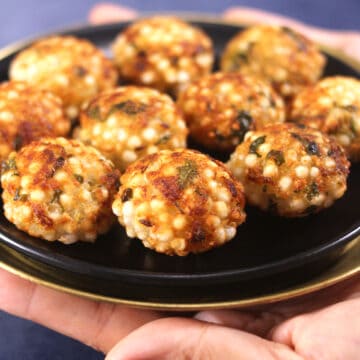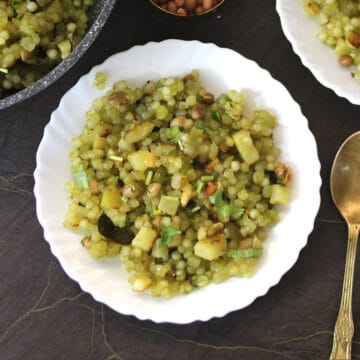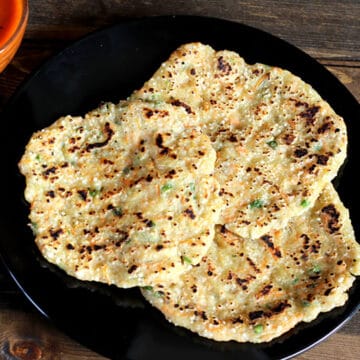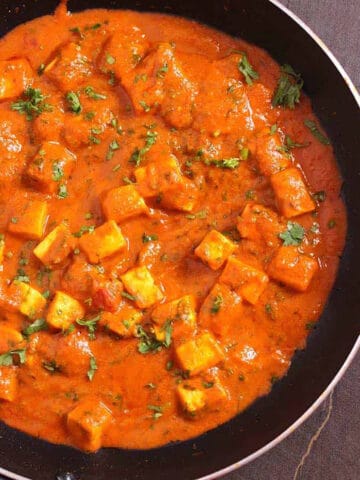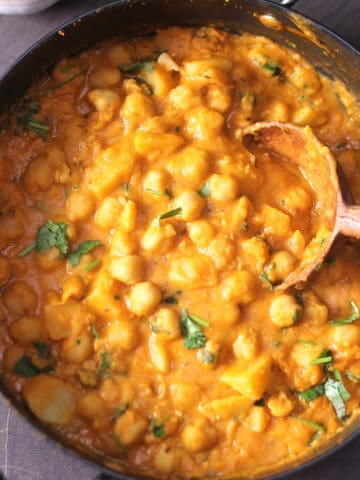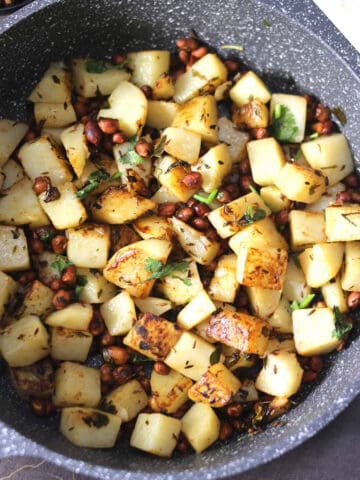Jump to:Indian festivalWhat can be eaten during fasting, upvas or vrat?About Sabudana (Sago, tapioca pearls)Fasting, upvas, vrat recipes with sabudanaMore Indian vrat & fasting recipesUser Reviews
Indian festival
Shravan Month Śrāvaṇa or Saavn is the holiest month in the Hindu calendar, and all the Hindu festivals start this month. For many Hindus, the month of Shraavana means the month of fasting. During Shraavana, some fasts are held every Monday as part of their prayers to Lord Shiva and Tuesdays to goddess Parvati. Fasting on Tuesdays is known as Mangala Gowri (Gauri) vrat. And if you are from a Konkani household, chudi puja (choodi pooja) - A pooja of sun and nature is celebrated on Fridays and Sundays of Shraavana month. Married women perform pooja using choodi - a small bunch of flowers and plants. And the year’s second half is filled with festivals starting from Nagar Panchami, Vara Laxmi Vratam, Krishna Janmashtami, Ganesh Chaturthi, Ekadashi, Teej, Rakhi (Raksha Bandhan), Navratri to Diwali.
What can be eaten during fasting, upvas or vrat?
It’s a common practice not to add onion and garlic in special vrat ka khana or festival food. Some devotees skip one meal during Shraavana month, while others don’t eat rice, cereals, grains, or any packaged items during fasting, upvas, and vrat days. Food that is allowed during fasting includes water chestnut flour (singhare ka atta), buckwheat flour (kuttu ka atta), amaranth flour (rajgira ka atta), arrowroot flour (kuve pita), sabudana pearls or flour, barnyard millet (sama ke chawal, samo rice) Every region has different fasting rules. Make sure you check with your family elders and follow the traditions and fasting rules. You can check a very broad list of fasting, upvas, vrat recipes, or Navratri recipes for nine days. Sabudana is one ingredient that is allowed during fasting, vrat, or upvas all over India. So I thought this list would be handy for all those who are fasting during Navratri, Karwa Chauth, Ganesh Chaturthi, Ekadashi, Sai Guruvar, Sankashti, etc.
About Sabudana (Sago, tapioca pearls)
Sabudana, also known as tapioca pearl or sago is a starch processed in the shape of white pearls extracted from tapioca made using cassava roots.
What is sabudana called in English?
Sabudana is called sago or tapioca pearls in English, sabbakki in Kannada, saggubiyyam in Telugu, javvarisi in Tamil.
Why is sabudana or sago consumed during vrat, fasting, and upvas days?
Sabudana is high in carbohydrates, thus a fast energy booster. It prevents any digestion issues, relieves gas, constipation, or any bloating. Since sabudana recipes like khichdi (khichri) require fewer spices and keeps you full for a long time, it is mainly cooked during fasting days.
Fasting, upvas, vrat recipes with sabudana
Sabudana Khichdi or Sabudana Khichri Sabudana Vada, fried or appe (paniyaram) Refreshing Sago Drink Sabudana Idli Sabudana Kheer Chana Dal Sabudana Kheer with Jaggery Moong Dal Sabudana Kheer with Jaggery Instant No Soak Sabudana Fries Traditional Maharastraian Style Sabudana Vada Sabudana Dosa or Thalipeeth Sago Mango pudding
More Indian vrat & fasting recipes
Did you like this recipe? Please leave a star ⭐️⭐️⭐️⭐️⭐️ rating below and/or a review in the comments section. You can also stay in touch with us through social media by following us on Pinterest, Facebook, Instagram, and Twitter.





